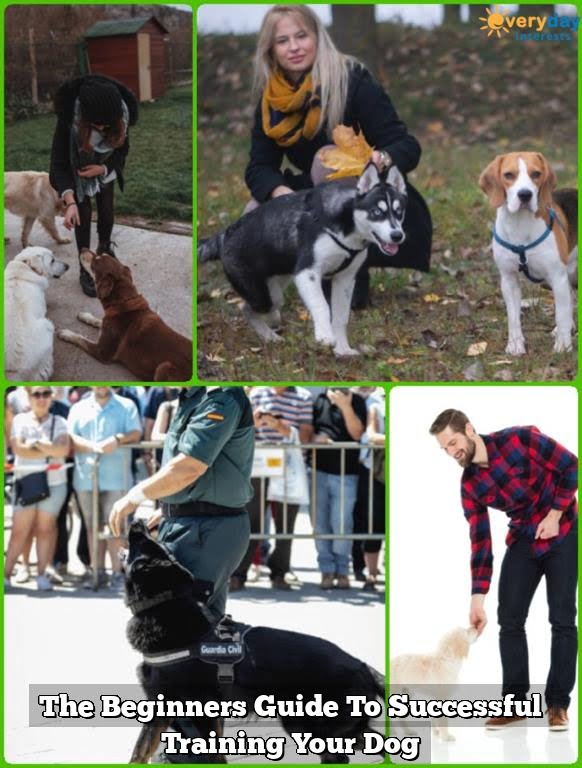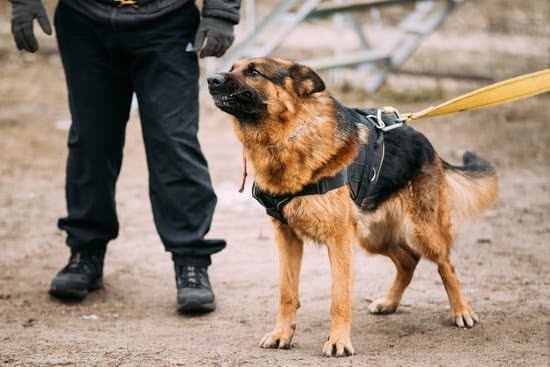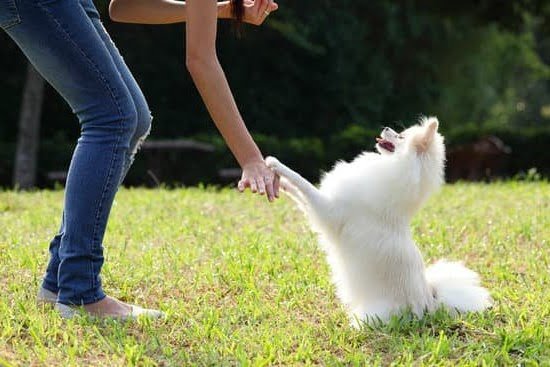Guide dog training plays a crucial role in enhancing the lives of visually impaired individuals. These highly trained dogs serve as guides, providing invaluable assistance and independence to their handlers. In this blog post, we will explore the purpose and importance of guide dog training, tracing its history and discussing the selection process for potential guide dogs.
We will also delve into the various stages of training, from puppy raising and socialization to formal guide dog training programs. Additionally, we will highlight specific commands and skills that these remarkable animals learn, as well as address ethical considerations and ongoing challenges in guide dog training. By understanding the intricacies of guide dog training, we can truly grasp the impact it has on visually impaired individuals and support the organizations that make this incredible work possible.
The History of Guide Dog Training
The history of guide dog training is a fascinating journey that showcases the evolution of this invaluable service. Tracing its origins back to its early beginnings, guide dog training has come a long way in providing independence and mobility to visually impaired individuals.
The Origins of Guide Dog Training
Guide dog training can be traced back to the early 20th century when World War I veterans began using guide dogs to navigate their surroundings. In particular, German Shepherds were found to possess the intelligence and loyalty required for this role. It was during this time that Dorothy Eustis, an American dog trainer living in Switzerland, was introduced to the concept of guide dogs.
Key Figures and Milestones
Dorothy Eustis played a significant role in the development of guide dog training programs. After witnessing firsthand the transformative impact a guide dog had on an individual’s life, she helped establish The Seeing Eye, the first guide dog school in the United States, in 1929. This marked a major milestone in the history of guide dog training, paving the way for other organizations around the world.
Over the years, numerous organizations dedicated to providing trained guide dogs have emerged globally. The Guide Dogs for the Blind Association in England and Guide Dog Foundation for the Blind in America are notable examples that have made substantial contributions to advancing guide dog training techniques.
Advancements in Guide Dog Training
Advancements in technology and our understanding of canine behavior have greatly improved guide dog training methods. Today, modern techniques such as positive reinforcement training and clicker training are widely employed during formal training programs. These advancements have allowed trainers to better understand and communicate with their canine partners during the training process.
Additionally, advancements have been made regarding breeding practices, selecting dogs with suitable temperament traits needed for guiding tasks. This focus on genetics plays a vital role in producing successful working guide dogs.
The history of guide dog training is a testament to the unwavering dedication and passion of individuals and organizations striving to improve the lives of visually impaired individuals. As we continue to learn more about canine behavior and refine our training techniques, the impact of guide dog training will only grow stronger in the future.
The Selection Process for Potential Guide Dogs
Selection Criteria for Guide Dogs Candidates
Guide dog organizations have a rigorous selection process to identify suitable candidates for guide dog training. This ensures that the dogs chosen have the necessary qualities and capabilities to become successful guide dogs. The selection process involves several criteria, including health, temperament, and physical requirements.
Health plays a vital role in determining a potential guide dog’s suitability for training. Guide dog organizations prioritize selecting dogs with good overall health and without any genetic or hereditary conditions that could affect their ability to work effectively. They undergo comprehensive medical examinations and screenings to ensure they are physically capable of handling the demands of guide work.
Temperament is another crucial factor in selecting a potential guide dog candidate. These dogs need to exhibit calmness, confidence, and an eagerness to please. Guide dogs must be comfortable working in diverse environments and be easily adaptable to various situations. Organizations assess candidates’ temperaments through extensive evaluations that involve exposing them to different stimuli and observing their reactions.
Physical requirements are also considered during the selection process. Guide dogs need to be of appropriate size and structure to comfortably navigate busy streets and public spaces alongside their handlers. They cannot be too large or small as it may impede their ability to perform specific tasks effectively.
A Rigorous Selection Process
Once potential guide dog candidates meet these initial criteria, they proceed through a rigorous selection process that includes further assessments and tests. Organizations assess aspects such as trainability, cooperation, response to commands, concentration levels, adaptability, problem-solving skills, and motivation.
During this stage, the potential guide dogs receive basic obedience training while being observed closely by trainers who evaluate their performance and abilities. They are exposed to various environments such as traffic intersections, crowded areas, public transportation systems, restaurants, shops, and other common scenarios where they will eventually accompany visually impaired individuals.
Only those candidates who exhibit exceptional qualities at each step of the process move forward into formal guide dog training programs. This careful selection process ensures that only the most suitable dogs are chosen to undergo the intensive training required to become reliable and highly skilled guide dogs.
Puppy Raising and Socialization
One of the crucial stages in guide dog training is the puppy raising and socialization process. This stage plays a vital role in preparing guide dog puppies for their future roles as assistance animals. It involves a combination of structured training, exposure to various environments, and social interactions to ensure that the puppies grow up to be confident and well-behaved guide dogs.
Guide dog organizations rely on volunteers who generously open their homes and hearts to raise these special puppies during their first year of life. These volunteers, often referred to as “puppy raisers,” provide a safe and nurturing environment where the puppies can learn basic obedience commands, establish good manners, and get accustomed to everyday living experiences.
During this period, guide dog puppies are also exposed to a wide range of environments, such as busy streets, shopping malls, public transportation, parks, and even restaurants. This exposure helps them become familiar with different sights, sounds, smells, and textures they may encounter while assisting their handlers in the future. By being exposed to diverse environments at an early age, these puppies learn to confidently navigate through various situations without hesitation or fear.
In addition to environmental exposure, socialization is another critical aspect of guide dog puppy training. Puppy raisers ensure that the puppies are introduced to a variety of people-men, women, children-as well as other animals like dogs and cats.
Interaction with people from different backgrounds helps the puppies develop trust and adaptability when working with individuals from all walks of life. Exposure to other animals supports their ability to remain calm and focused when encountering distractions or unfamiliar animals while guiding their handlers.
Overall, puppy raising and socialization foster key traits like confidence, adaptability, sociability, obedience skills that are essential for future guide dogs. The efforts put into this early stage lay down a solid foundation for the formal training programs that follow as the puppies progress toward becoming highly skilled working guides. By exposing guide dog puppies to various environments and social interactions, puppy raisers play a fundamental role in shaping these animals into reliable companions for visually impaired individuals.
Here is a list of the key aspects involved in puppy raising and socialization:
- Puppy raisers provide a safe and nurturing environment.
- Guide dog puppies learn basic obedience commands and good manners.
- Exposure to different environments helps puppies become familiar with everyday experiences.
- Socialization with diverse people and animals builds confidence and adaptability.
- These experiences lay down the foundation for future formal guide dog training programs.
Formal Guide Dog Training Programs
Guide dogs undergo extensive formal training programs to ensure that they are equipped with the necessary skills and commands to assist visually impaired individuals. These programs are designed to teach guide dogs how to navigate various environments, handle obstacles, and perform tasks that enhance the independence and safety of their handlers.
During formal guide dog training, professional trainers use a combination of positive reinforcement, repetition, and reward-based techniques to teach commands and skills. The training focuses on obedience, response to verbal and physical cues, and the development of problem-solving abilities. The aim is to create well-trained guide dogs that can confidently guide their handlers through different situations.
One important aspect of formal training programs is teaching guide dogs how to perform specific tasks that address the specific needs of their handler. For example, a guide dog may be trained to locate door handles or buttons for elevators, navigate crowded areas such as shopping malls or busy city streets, or find specific destinations such as bus stops or train stations.
These individualized tasks require careful instruction and consistent practice to ensure that the guide dog understands their purpose and executes them accurately.
Overall, formal guide dog training programs are comprehensive and intensive. They typically involve several months of training where guide dogs learn various commands and tasks. It is crucial for these programs to have experienced trainers who understand the unique requirements of guide dogs and can effectively communicate with them. Through these rigorous training programs, guide dogs become highly skilled companions who provide invaluable support to visually impaired individuals in their daily lives.
| Number of Months of Training | 6 – 12 months |
|---|---|
| Average Number of Commands Learned | 50 – 60 commands |
| Success Rate of Guide Dog Training Programs | Average success rate of around 70 – 80% |
Specific Guide Dog Commands and Skills
Guide dogs are specially trained to perform a wide range of commands and skills that assist visually impaired individuals in their daily lives. These commands and skills are carefully taught to the guide dogs through a rigorous training process, ensuring they can effectively navigate and guide their handlers in various situations. In this section, we will explore some of the specific commands and skills that guide dogs are trained to perform.
One essential command that guide dogs learn is “forward.” This command instructs the dog to move forward in a straight line, ensuring that the visually impaired handler follows a safe path. Guide dogs are also trained to stop at curbs, steps, or obstacles by responding to the command “stop.” This helps prevent any potential accidents or collisions with objects or changes in terrain.
Another crucial command is “turn,” which guides the dog to change direction based on instructions from their handler. This allows visually impaired individuals to safely navigate corners and intersections. Guide dogs also learn the command “left” and “right,” indicating which way the handler should turn when facing multiple paths or crossings.
Apart from basic commands, guide dogs are trained for advanced skills such as obstacle avoidance. When encountering obstacles such as low-hanging branches or construction barriers, guide dogs provide guidance by maneuvering around them without impeding their handler’s progress.
Guide dogs are also taught “intelligent disobedience,” which means they will disobey a command if it poses a danger to their handler’s safety. For example, if a visually impaired individual gives a command to cross the street when there is oncoming traffic, the guide dog will refuse to follow the instruction, thus preventing any potential harm.
In addition to these specific commands and skills, guide dogs undergo extensive training related to orientation and mobility techniques such as finding specific destinations like doors or seats in public spaces, locating designated areas for pedestrian crossings, or helping their handlers maintain balance while walking up or down stairs.
These highly specialized commands and skills enable guide dogs to provide a sense of security, independence, and freedom for visually impaired individuals. The training process to master these commands is intensive, requiring professional guidance and expertise. However, the impact they have on the lives of visually impaired individuals is immeasurable, allowing them to navigate their surroundings confidently and with enhanced mobility.
Matching Guide Dogs with Handlers
One of the most vital aspects of guide dog training is the process of matching guide dogs with visually impaired individuals. This step ensures that the partnership between a guide dog and their handler is harmonious and effective. The selection of the right guide dog for a particular individual involves careful considerations and assessments to ensure compatibility.
Guide dog organizations have developed specific processes for matching guide dogs with handlers. These processes typically involve assessing both the needs and abilities of the visually impaired individual, as well as the qualities and skills of the guide dog. Compatibility is a key factor in determining a successful match.
During this process, visually impaired individuals are usually given opportunities to interact with potential guide dogs to assess their chemistry. The temperament, energy level, and working style of the guide dog should align with the needs and preferences of their future handler. Additionally, factors such as lifestyle, mobility challenges, and daily routines are taken into account to ensure a suitable match.
Once a suitable match has been identified, training sessions are conducted to help establish trust and build rapport between the new pair. Both the guide dog and handler are taught how to effectively communicate and work together as an efficient team. These training sessions also focus on helping handlers understand how to care for and maintain their guide dogs’ well-being.
Matching guide dogs with handlers is not an exact science, but dedicated efforts are made by guide dog organizations to find the right match that will benefit both parties involved. With this carefully considered process, visually impaired individuals can experience greater independence and improved quality of life through their partnership with a well-matched guide dog.
- Assessment of needs and abilities
- Compatibility considerations
- Training sessions to establish trust
Ongoing Support and Continued Training
Once guide dogs are matched with visually impaired individuals, the journey does not end there. Both the guide dog organizations and handlers understand the importance of ongoing support and continued training to ensure the effectiveness of the partnership. This section will explore the long-term relationship between guide dog organizations and handlers, discuss the support systems in place for guide dog handlers, and detail the continued training and annual assessments that guide dogs and handlers undergo.
Guide dog organizations recognize that maintaining a strong relationship with their handlers is crucial to their success. These organizations provide ongoing support through various means such as regular check-ins, access to professional trainers and behaviorists, and support groups or communities.
Regular check-ins may involve home visits or virtual meetings to assess how well the guide dog is performing its duties and if any adjustments need to be made. Additionally, access to professional trainers ensures that any behavioral issues or challenges can be addressed promptly.
Support groups or communities play an essential role in providing emotional support, networking opportunities, and a sense of belonging for guide dog handlers. These communities allow handlers to connect with others facing similar challenges, share experiences and advice, and offer a supportive environment where they can discuss their triumphs as well as their difficulties.
Continued training is also a key component of maintaining a successful partnership between guide dog and handler. Guide dogs undergo annual assessments to evaluate their skills, obedience, behavior, and overall health. This allows any areas of improvement or additional training needs to be identified. Handlers also receive additional training sessions throughout the year to refresh their knowledge on working with their guide dogs effectively.
The ongoing support and continued training provided by guide dog organizations are vital not only for ensuring the safety of visually impaired individuals but also for enhancing their independence and quality of life. These efforts contribute significantly to maintaining a strong bond between handler and guide dog while optimizing their ability to navigate daily tasks seamlessly.
Data Table: Ongoing Support for Guide Dog Handlers
| Support Provided | Description |
|---|---|
| Regular check-ins | Guide dog organizations conduct regular check-ins to assess the performance of the guide dog and address any concerns or adjustments needed. |
| Access to professional trainers and behaviorists | Handlers have access to professionals who can provide guidance, advice, and address any behavioral issues that may arise. |
| Support groups or communities | A supportive environment where handlers can connect with others, share experiences, seek advice, and find emotional support. |
| Continued training sessions for handlers | To refresh their knowledge, improve their skills in working with the guide dog, and address any specific needs. |
Ethical Considerations and Challenges in Guide Dog Training
Guide dog training is a complex process that aims to provide visually impaired individuals with the assistance and independence they need. However, like any training program, there are ethical considerations and challenges that arise. This section will address these concerns, discuss the challenges faced by trainers and handlers, and explore ongoing efforts to improve guide dog training techniques and standards.
One of the primary ethical considerations in guide dog training is ensuring the welfare and well-being of the dogs involved. Critics argue that guide dog training may push dogs beyond their natural limits or result in stress or discomfort for them.
To address these concerns, guide dog organizations have rigorous protocols in place to ensure that their dogs are healthy, happy, and well-cared for throughout their training journey. These protocols include regular veterinary check-ups, appropriate exercise routines, nutritious diets, and socialization opportunities.
Another important ethical consideration is determining when a dog is unsuitable for guide work or needs to retire from duty. Guide dogs go through extensive assessments throughout their training to determine if they possess the necessary skills, temperament, and physical health required for guiding tasks.
However, some dogs may display signs of discomfort or inability to perform certain tasks over time due to age-related issues or other reasons. Guide dog organizations strictly monitor each guide dog’s performance and make decisions based on what is in the best interest of both the handler and the dog.
In addition to ethical considerations, guide dog training also presents various challenges for trainers and handlers. Trainers must constantly adapt their methods to suit individual dogs’ needs as well as keep up with evolving best practices in animal behavior and training techniques.
Handlers face unique challenges such as learning to trust their guide dogs completely, navigating unfamiliar environments confidently, and effectively communicating with their canine companions. Ongoing support systems provided by guide dog organizations help trainers and handlers overcome these challenges by offering counseling services, specialized workshops or courses, peer support networks, and access to resources.
Efforts are continually underway to improve guide dog training techniques and standards. Researchers are studying how dogs learn and process information to develop more effective training methods.
Advances in technology have led to the use of innovative tools, such as virtual reality simulations, that assist in training dogs for specific scenarios or tasks. Collaborations between guide dog organizations and researchers aim to enhance the overall training experience, ensuring that visually impaired individuals receive the best possible support from their guide dogs.
Conclusion
In conclusion, guide dog training plays a vital role in enhancing the lives of visually impaired individuals. Throughout this blog post, we have explored the history, selection process, training programs, specific commands and skills, matching process, ongoing support, and ethical considerations involved in guide dog training.
Guide dogs are not simply pets; they are highly trained companions that provide independence, safety, and confidence to their visually impaired handlers. These remarkable animals allow individuals with visual impairments to navigate their surroundings with ease and perform daily tasks that may otherwise be challenging or impossible. From helping their handlers cross busy streets to leading them through crowded spaces, guide dogs create a sense of freedom and empowerment.
It is important to recognize the immense impact that guide dog training has on visually impaired individuals. By supporting guide dog organizations and raising awareness about the importance of this training, we can help ensure that more visually impaired individuals have access to these life-changing partnerships. Whether it is through volunteering at puppy raising programs or raising funds for guide dog organizations, every effort makes a difference.
Frequently Asked Questions
What is the guide dog training method?
The guide dog training method involves a structured and intensive process to prepare dogs to assist individuals with visual impairments. Training typically starts when the dog is still a puppy, around 8-12 weeks old. Trainers focus on developing the dog’s basic obedience skills, socialization abilities, and their ability to guide and navigate in various environments.
Guide dogs are specifically trained to navigate obstacles, avoid potential hazards like traffic, keep a steady walking pace, stop at curbs or stairs, and follow various commands from their handler. They also learn special techniques such as finding landmarks and responding to directional cues.
What commands do guide dogs know?
Guide dogs are trained to respond to a variety of verbal commands given by their handlers. Some common commands include “forward” or “walk,” which tells the dog to move forward in a specific direction; “halt” or “sit,” which instructs the dog to stop moving; “right” or “left,” which indicates the desired direction for the dog to turn; and “wait,” which tells the dog to pause until further instruction is given.
Additionally, guide dogs are taught commands like “up” or “down,” indicating when they should step up onto a curb or down from an elevated surface respectively.
What is the purpose of a guide dog?
The purpose of a guide dog is to enhance independence and mobility for individuals with visual impairments. These specially trained dogs provide essential assistance by guiding their handlers through everyday tasks and helping them navigate their surroundings safely.
Guide dogs become trusted companions who significantly improve the quality of life for people with vision loss by providing them with confidence, freedom of movement, and increased accessibility in public spaces. They help overcome barriers that would otherwise impede navigation, allowing their handlers to travel more efficiently and participate fully in society without relying heavily on others for assistance.

Welcome to the blog! I am a professional dog trainer and have been working with dogs for many years. In this blog, I will be discussing various topics related to dog training, including tips, tricks, and advice. I hope you find this information helpful and informative. Thanks for reading!





